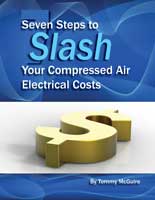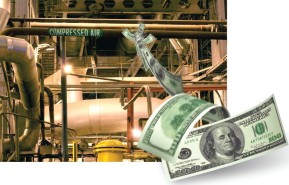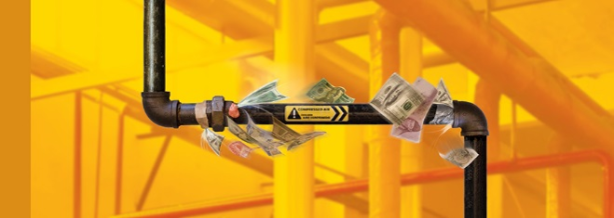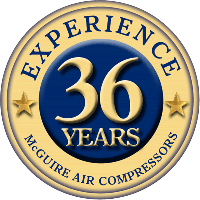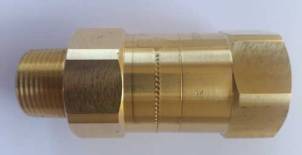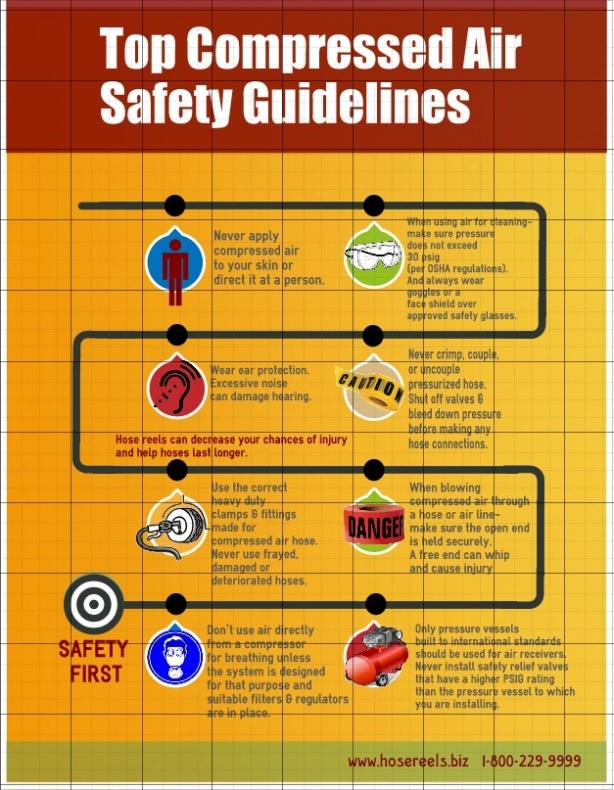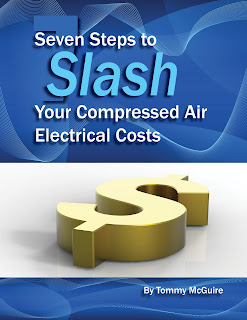- Does your air pressure keep dropping while you are using your tools & equipment?
- Have you added or are planning to add new equipment which uses air?
- Are your air compressors working hard all the time- but you just aren’t sure how to figure how much more horsepower you need?
When your business counts on air – you need to know the valuable formulas and steps to help accurately determine how many CFM you use. You also need to know how to accurately figure how much additional CFM and horsepower you need when considering a new air compressor?
Here are some specific formulas that can help you determine how many CFM you presently use and how many more CFM you need to meet your desired PSIG. We will show you how to take this information and use it to determine how much air compressor horsepower you actually need.
Find out how many CFM your air compressor delivers
1. STOP the compressor unit
2. CLOSE the outlet valve on the tank/air receiver
3. DRAIN the condensate from air receiver until there is 0 PSIG –
then close the drain valve
4. NOTE THE TIME- in minutes & seconds (Best to write it down.) Then START THE UNIT.
When the compressor unit stops and unloads – then NOTE THE TIME again – in minutes & seconds. Convert the minutes into seconds and then total the number of seconds it takes between START and STOP/UNLOAD.
5. NOTE the GUAGE PSIG reading
6. NOTE the Air Receiver/Tank GALLON SIZE
7. USE THIS FORMULA:
TANK GALLONS x .538* x PSIG divided by SECONDS
EXAMPLE:
You have an 80 gallon tank, your total start to stop/unload time was
3 minutes and 30 seconds. Change the minutes to seconds timed
(60 x 3= 180 seconds plus 30 seconds which totals 210). You will use the total number of seconds (210) and the noted 175 PSIG within the formula as shown below:
80 multiplied by .536 = 42.88
42.88 multiplied by 175 (Example PSIG) = 7504.00
7504.00 divided by 210 (total seconds)= 35.74 CFM delivered
The example shows that the air compressor is delivering 35.74 cfm
Your Response to this evaluation should be to compare this number with what your air compressor manufacturer says your CFM should be and evaluate how efficiently your compressor is running.
If your air compressor is within 10% of manufacturer’s specifications, then the unit is OK, if not – repair unit and recalculate your needs.
Find out how many more CFM you need to
raise your PSIG
1 What is your desired pressure ______?
(Our Example125 psig)
2. What is your present operating pressure_______?
(Our Example 70 psig)
3. Divide desired pressure by present operating pressure
(125 psig divided by 70 psig = 1.79)
4. This gives us the X-factor needed for this formula (1.79 )
Multiply present air compressor cfm (35.74) by your X-factor (1.79)
(35.74 X 1.79= 63.98 This gives you the total cfm needed –
which is 63.98 for our example)
6. Deduct your present cfm from the needed cfm
(63.98 minus 35.74 present cfm = 28.24)
7. This gives you the additional cfm needed to raise your psig to the level you actually need. (which is 28.24 additional cfm for our example)
Translate your answers into how much horsepower
you actually need to operate
Divide your additional cfm needed by 3.5* (see the chart for your *actual compressor type & horsepower)
(28.24 ÷ 3.5 = 8.07 hp, which would be the additional horsepower needed for our example)
This will give you the additional horsepower you actually need.
(We will need to round up the 8.07 hp to 10 hp needed for our example. You will have to round up to the nearest standard
horsepower also.)
*CFM per compressor horsepower chart:
3.5.cfm per hp for small piston compressors ½-30 hp
4 cfm per hp for large piston 40 hp up & small screw compressors
2 hp-30 hp
4.5 cfm per hp for 40 hp-150 hp medium hp screws
5 cfm per hp for 200 hp-2000 hp large screw & centrifugal compressors
Note: Always buy CFM of delivered air at the PSIG you need…not horsepower.
Note: Always invest in at least 20% more CFM than your equipment needs. This will cover extra air usage for such things as air leaks and wear.
Follow these formulas and you can figure just how much more CFM and air compressor horsepower you really need to get the job done!
Compressor Terms you should know:
Cubic Feet Per Minute (cfm) – Volumetric air flow rate.
“psig” means pounds per square inch, GAGE pressure. Gage pressure is the absolute pressure of something, with the atmospheric pressure subtracted. In practice, when someone gives a pressure in just “psi” they probably mean gage pressure. If they mean absolute, they should be using “psia.”
Gauge Pressure – The pressure determined by most instruments and gauges, usually expressed in psig. Barometric pressure must be considered to obtain true or absolute pressure.
Load Time – Time period from when a compressor loads until it unloads.
Unload – (No load) Compressor operation in which no air is delivered due to the intake being closed or modified not to allow inlet air to be trapped.
Receiver – A vessel or tank used for storage of gas under pressure. In a large compressed air system there may be primary and secondary receivers.
Tommy McGuire
McGuire Air Compressors, Inc.
“Real People with Real Compressor Experience”
1-888-229-9999
www.industrialaircompressors.biz
www.hosereels.biz
www.airdryers.biz
